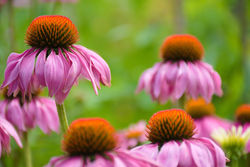Planting perennials on top of bulbs — is it a good idea?
- Lars Wildes
- Dec 22, 2022
- 3 min read
Updated: Dec 30, 2022
I get asked this question a lot — Can you plant perennials on top of bulbs? Or are you just burying them alive?
In this post, we'll look at why you might want to consider planting perennials on top of your bulbs and how to go about doing it. We'll also look at the pros and cons of this technique so that you can decide whether it’s right for your garden or not.

Why plant perennials over bulbs?
Perennials come back year after year while bulbs typically die back after flowering.
This means that by planting perennials over bulbs, you can create a long-lasting display in your garden that offers both visual interest and seasonal blooms throughout the year.
Plus, because most perennial plants are low-maintenance, they require little effort and maintenance once they have been planted.
How to plant perennials over bulbs
When it comes to planting perennials over bulbs, there are a few things you need to keep in mind.
Firstly, it’s important to choose bulb varieties that bloom early in the season so that the perennials have enough time to establish themselves before being overshadowed by the taller bulb foliage later in the season.
Secondly, make sure that there is adequate space between each plant so that they don’t compete for resources such as light and water.
Lastly, make sure that you choose perennial varieties that aren’t too tall or vigorous – otherwise, they may dominate the delicate bulb blooms!
Pros and cons of planting perennials over bulbs
Like all gardening strategies, planting perennials on top of bulbs has its advantages and disadvantages.
On one hand, it creates a long-lasting display in your garden without requiring much effort or maintenance from you once established; on the other hand, if not done correctly it could lead to overcrowding which could negatively affect both plants and reduce their lifespan.
Some bulb varieties require special care when planted alongside other plants due to their sensitivity – something which should be taken into consideration before embarking on this project.
Pros
One great advantage to planting perennials on top of bulbs is that it saves time and effort in the long run.
Since bulbs will bloom for years, there’s no need to dig up the ground every season to replant them. This saves a considerable amount of work for gardeners who have large gardens with lots of varieties of plants.
Plus, since perennials are typically quite hardy, they can help protect delicate bulbs from weather extremes or pests that might otherwise damage them.
Cons
One major downside to planting perennials on top of bulbs is that it could prevent certain species from blooming properly.
Depending on the type of bulb, some species may need more direct sunlight than they would receive if they were planted beneath a perennial plant.
Additionally, some perennials may take up more space than necessary when planted along with other plants or shrubs, leading to overcrowded beds where no one type of plant can truly thrive.
So can you plant perennials on top of bulbs? Yes — but only if they're buried deep enough for both plants' needs to be met without interfering with one another’s growth cycles.
Overall, whether or not you should plant perennials on top of bulbs depends entirely upon your individual gardening goals.
If you’re looking for a quick-fix solution for an area where you don't plan to change much over time (such as around trees or hardscaping), then maybe this is an ideal solution.
However, if you plan to grow many different types of flowers and/or plants in your garden over time, then it's probably best to keep perennial plants separate from any bulbs so they each have enough room to thrive without competing with each other for resources such as water and sunlight.
Ultimately, it's up to you as the gardener to make the best decision for your particular garden design needs.
You Asked — We Answered
What are bulbs?
It would help to know what a bulb is before burying one in your garden.
Bulbs are underground storage ‘seeds’ that contain energy reserves and food for plants. Examples of bulbs include tulips, daffodils, lilies, and crocuses. Most bulbs have a short growing season during which time they produce flowers. After this period, the flowering parts die back and the bulb goes dormant until next year when it flowers again.
What are perennials?
Perennials are plants that live for more than one season — they come back year after year.
This means that once planted, they will come up again every year with minimal care from the gardener. Examples of perennials include Hemerocallis (Daylily), Hosta, Heuchera (Coral Bells) and Ornamental Grass.





